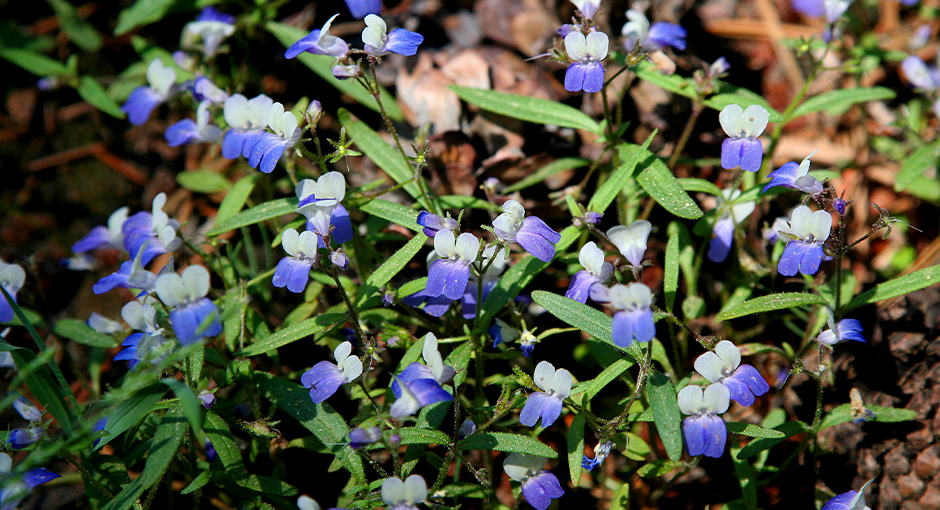4 National Parks With Stunning Wildflowers
Wild gardens worth seeing to celebrate spring
Our National Parks are full of natural wonders, from endangered animals to landscapes carved millions of years ago. If you’re wondering what can make a breathtaking landscape even more memorable on your summer trip, just wait until you see Mother Nature’s canvas painted with wildflowers.
As tempting as it may be, remember to just look and not touch the wildflowers, as it is illegal to take any plants from our National Park System. Plus, you wouldn’t want to take away dinner plans from the wildlife, would you?
We know, we know… April showers bring May flowers. But you don’t have to limit your travels to May to see wildflowers at these Parks.
Woolly Sunflowers in Yosemite National Park
Yosemite National Park really takes the cake when it comes to wildflowers. Because of Yosemite’s location, plant species from the Pacific coast, Great Basin, southern deserts and northern mountains have migrated to the area. Add to that the range in elevation (2,000 feet in the west and 13,000 in the east) that creates perfect growing conditions, and you have a wildflower paradise.
There are 1,450 wildflower species in the Park, which range from monkeyflowers and buttercups to lupines and shooting stars, depending on the elevation and the season. The woolly sunflower, which is only found in the Yosemite region, doesn’t look much like a traditional sunflower. It’s part of the daisy family and only grows to six inches tall.
Spring and summer are the best times to view Yosemite’s wildflower landscapes. You can even explore popular trails with abundant wildflowers.

Bitterroot in Yellowstone National Park
Enos Mills, known as the Father of Rocky Mountain Park, called Yellowstone National Park “a wildflower garden.” Hundreds of wildflower species of all shapes and colors dot Yellowstone’s ecosystem. Even the harsh growing conditions by the geysers can’t stop wildflowers from springing up.
Open meadows and sagebrush-steppe are your best bet for a spectacular display of wildflowers in Yellowstone National Park, so think Gardiner and Lamar Valley. You’ll find the large pink blossoms of bitterroot (the state flower of Montana) and if you’re up for an after-dark adventure, you’ll find evening primrose (which only blooms at night). Blooms are most abundant in June through mid-July.
You can find a list of wildflowers in Yellowstone, organized by color, location and blooming period, here.
Pink Azaleas in Shenandoah National Park
The Blue Ridge Mountains of Virginia, home of Shenandoah National Park, is the place to observe wildflowers. With more than 860 species of wildflowers through the spring, summer and fall, you’ll be amazed by how many different flowers you see at this National Park – no matter when you visit.
In spring and summer, look for a Southern favorite along the trails: small blue and yellow flowers called bluets or Quaker ladies. Beautiful pink azaleas will greet you along Skyline Drive in May, then white mountain laurel in June. Keep your eyes out for yellow and orange touch-me-nots near streams and springs in the summertime, and even wild sunflowers in the fall.
Shenandoah National Park has a helpful wildflower calendar, so you know what to look for when you visit.
Sentry Milk-Vetch in Grand Canyon National Park
When you think of Grand Canyon National Park, you’re probably picturing rock formations more than plants and wildflowers, right? Surprise! The Grand Canyon is actually home to more than 650 wildflowers. The wildflowers found at this park have little or no stem, and many are succulents.
If you see tiny purple and white flowers in small patches along the rim of the Grand Canyon during the spring or fall, you’re likely among sentry milk-vetch plants, which are native to the canyon. This wildflower is federally endangered, and a recovery program is underway at the park to preserve the plant.
You’ll find a whole rainbow of wildflowers at any given time at the Grand Canyon.
Which flowers are you most excited to see? Grab your camera, pack a picnic and start your adventure.
